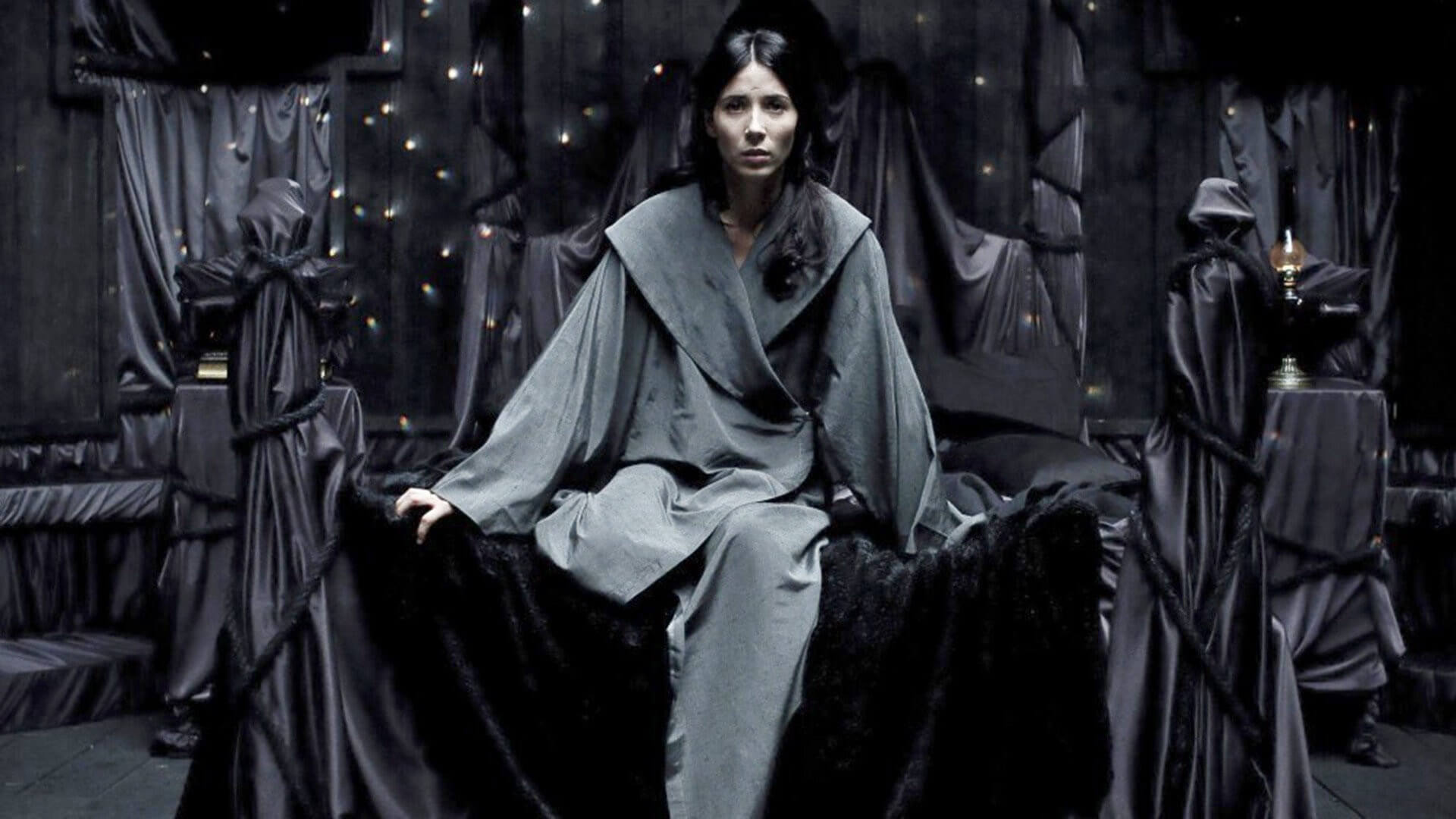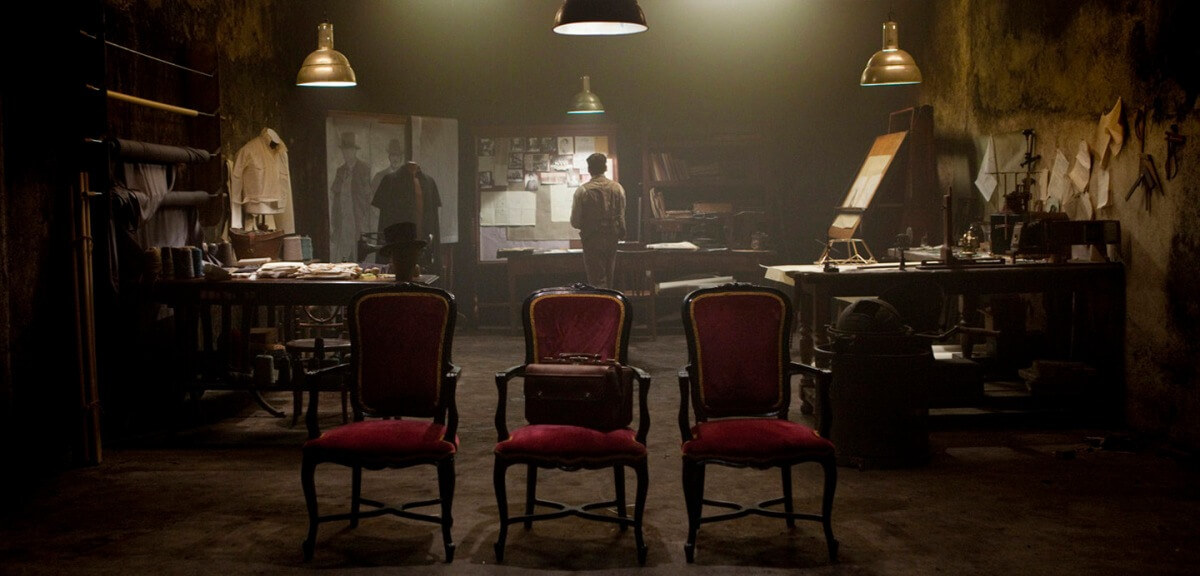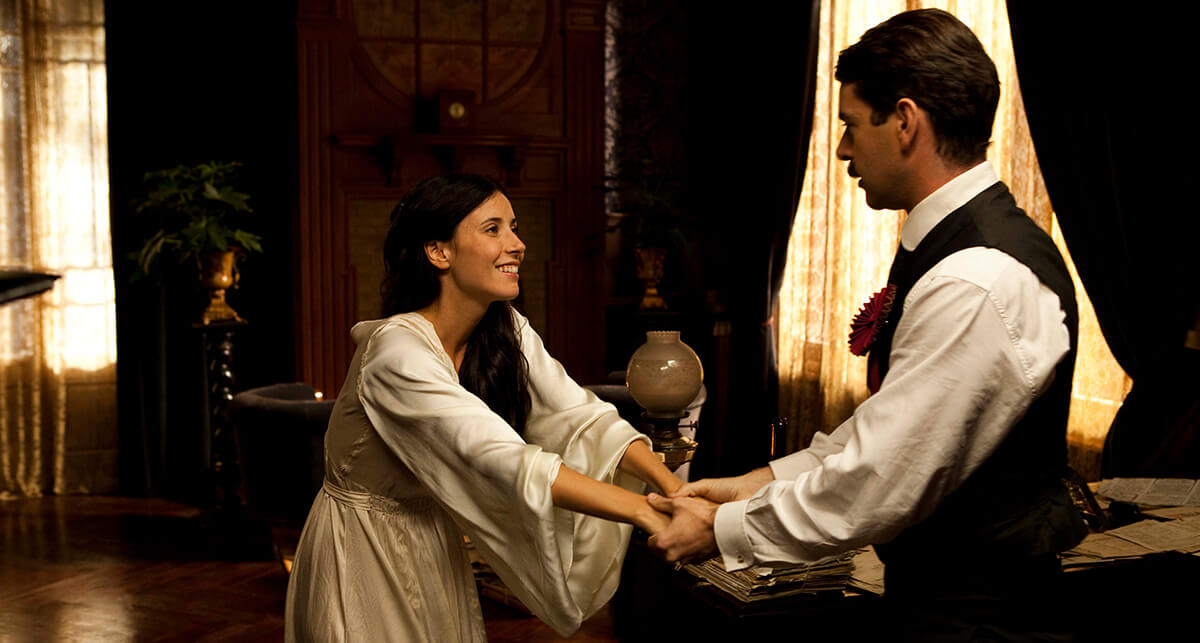AGNOSIA. Surprising thriller from Spain

…, produced by the gentlemen who once put money into Pan’s Labyrinth and The Orphanage, and the plot summary may evoke associations with The Eyes of Julia. As if that weren’t enough, there’s also the poster – intriguing, dark, perfect as an illustration for a new, dreamlike horror straight from Spain. The only problem is that Agnosia has nothing to do with horror.
Joan’s father, the main character of Eugenia Mira’s film, is a manufacturer and inventor. At the end of the 19th century, he designed an incredibly precise sniper scope that could revolutionize the arms industry and provide the constructor with enormous profits. During the weapon demonstration, teenage Joan faints in front of the gathered magnates, and the valuable prototype is destroyed. We move forward seven years: the now-adult girl has been suffering from a strange, rarely encountered neurological condition since the accident, manifesting as an inability to filter sensory stimuli, Agnosia. Her world looks like the worst nightmare: she doesn’t distinguish voices, and instead of faces, she sees distorted, grotesque masks, making it impossible for her to recognize members of her own family. In the grand mansion where she lives with her father and fiancé, Carles, everything has been arranged to enable the girl to lead a relatively normal life: handrails installed along the walls allow her to find her way to the appropriate room, and all household members wear special, colorful rosettes for identification.

Contrary to expectations, the house is not haunted, and Joan turns out not to be the only one who would see monstrous apparitions. Shots showing the world from the girl’s perspective last no more than half a minute throughout the film, and the potential “paranormal” of the original idea completely does not interest the director of Agnosia. For Eugenia Mira, the terrifying illness becomes a focal point for a melodramatic-criminal love triangle story that sooner or later must end tragically. This is likely also the reason for the large number of critical reviews and low ratings of Agnosia – Mira starts with a “horror” idea and styles his film as if he wanted to follow the path set by Guillermo del Toro. After a while, however, he takes his own, surprisingly original path.

The scope does not make it into mass production, and Joan’s father does not start making millions – after losing the prototype, he believes that wealth built on human death is not worth its price. It’s easy to guess that such an attitude drives his business partners crazy. Spies sent to the factory do not find plans for the device but accidentally cause a fire in which the constructor dies; the last person who could reveal the secret of the scope’s construction is Joan. Greedy entrepreneurs abduct her under the guise of experimental therapy and substitute a coerced butler to pretend to be the girl’s fiancé and extract the valuable secret from her.

From this moment on, the proper part of the story of Agnosia begins. The director focuses primarily on the melodramatic values of the plot, pushing the criminal threads into the background. Sensuality and burgeoning feeling are definitely more important here than the methods of acquiring the plans for the scope, and the emotions of the characters determine the pace of the story. Mira uses a whole range of somewhat kitschy but surprisingly apt tricks (so the lovers will whisper tender lines to each other, and in the climactic scene, snow will begin to fall), without losing an ounce of credibility.

Agnosia is from start to finish a staged film, precisely planned and thought out down to the frame, additionally adorned with exceptionally picturesque, sometimes unnaturally beautiful shots. Interestingly enough – there is no artificiality in this. Mira sometimes loses himself in the narration of individual threads, but these mistakes are made up for by the stunning Barbara Goenaga, embodying the character of Joan, and a very well-written screenplay, allowing the director to have a keen sense of individual emotions. Although Agnosia sometimes resembles a theatrical performance in form, the authenticity of the feeling itself remains intact.
The sad thing about all this is only one: viewers who watch Eugenia Mira’s film expecting a solid dose of Spanish horror will leave the cinema bored and irritated. And those who would like Agnosia will probably never see it.

